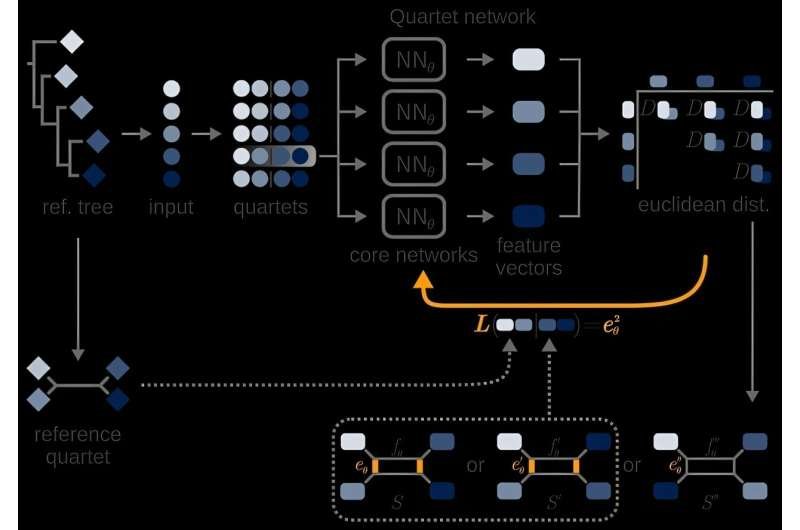AI Research
NCCN Policy Summit Examines the Potential of Artificial Intelligence to

In a landmark gathering held in Washington, D.C., on September 9, 2025, the National Comprehensive Cancer Network® (NCCN®) convened a forward-looking Policy Summit focused exclusively on the burgeoning role of artificial intelligence (AI) in oncology. This summit, hosted by one of the world’s foremost coalitions of cancer centers committed to advancing patient care, research, and education, assembled a distinguished consortium of experts—spanning oncologists, data scientists, patient advocates, and healthcare policymakers—to dissect the current capabilities, ethical challenges, and transformative potential AI holds for cancer treatment and management.
The core of the discussion revolved around the accelerating integration of AI-driven tools within oncology practices and the critical juncture at which the medical community finds itself. Dr. Travis Osterman, an eminent figure in cancer clinical informatics at Vanderbilt-Ingram Cancer Center and a key voice in the NCCN Digital Oncology Forum, eloquently positioned this moment as an inflection point. According to him, the timely establishment of regulatory frameworks and thoughtfully crafted policy guardrails will be decisive in ensuring that AI enhances rather than disrupts the clinical workflow, patient safety, and care efficacy. Osterman underscored that the decisions made today will set the trajectory for AI’s sustainable incorporation into oncological care paradigms for years to come.
Despite the cautious optimism permeating the summit, leading authorities emphasized a pragmatic approach to adoption. William Walders, Executive Vice President and Chief Digital and Information Officer at The Joint Commission, articulated the present reality: AI technologies are neither speculative nor distant prospects but active components in contemporary oncology. Tools powered by machine learning are already instrumental in early disease detection, guiding treatment personalization, and alleviating administrative burdens on clinicians. Walders identified a critical necessity—designing safeguards and trust-building mechanisms that protect patients and reinforce the humanistic core of oncological care, ensuring that AI functions as a complementary force rather than a replacement for human judgment.
The rapid pace of AI model development was a recurring theme, with speakers drawing parallels to revolutionary milestones in medical history. The shift from paper-based to electronic medical records (EMRs) was invoked as a historical analogue, exemplifying how profound technological shifts can both disrupt and enhance clinical workflows. Summit participants conveyed palpable excitement for AI’s promise—not only in streamlining clinical operations but also in addressing the pressing crisis of workforce shortages in oncology and accelerating the pipeline of novel therapeutic discoveries.
Dr. Jorge Reis-Filho, Chief AI and Data Scientist at AstraZeneca’s Oncology R&D division, emphasized the unprecedented opportunities enabled by recent advances in multimodal foundation models and agentic AI. Such models, capable of synthesizing diverse data streams—from genomic sequences to imaging and clinical records—hold the potential to revolutionize biomarker discovery and refine the biological understanding of malignancies. This integrative, multi-dimensional data analysis could markedly improve precision oncology, tailoring interventions to the unique molecular signatures of individual tumors and enhancing therapeutic outcomes.
Clinical trial innovation also emerged as a pivotal area poised for AI-driven disruption. According to Dr. Danielle Bitterman of Mass General Brigham, AI’s ability to dismantle geographical and logistical barriers could democratize clinical trial access, extending life-saving investigational therapies to patients irrespective of their physical proximity to research centers. Moreover, the automation and simplification of complex trial protocols, powered by AI decision-support systems, promise to reduce trial inefficiencies and improve data integrity, thus hastening the translational journey from bench to bedside.
The interdisciplinary nature of AI’s integration into oncology was a key focal point, with calls for strengthened collaborations between oncologists and computer scientists. This partnership is anticipated to catalyze advances by ensuring that AI tools are pragmatically aligned with clinical realities and patient-centered objectives. Such synergy is viewed as indispensable for overcoming technical hurdles and ethical concerns alike, facilitating co-design processes that marry computational innovation with frontline clinical insight.
MIT’s Regina Barzilay, a prominent AI and health engineering professor, voiced a note of urgency amid the excitement. She warned that the actual uptake of AI-driven diagnostics and therapeutics lags behind technological capabilities. Barzilay advocated explicitly for the development and implementation of clinical guidelines that would mandate or incentivize the use of validated AI tools, thus accelerating their translation into routine patient care and overcoming institutional inertia and skepticism.
While the enthusiasm for AI’s potential was palpable, participants did not shy away from less optimistic perspectives. Significant challenges remain in implementing quality control and accreditation processes for AI algorithms in a manner that is rigorous yet not prohibitively burdensome. Furthermore, consensus on appropriate governmental and regulatory oversight remains elusive, creating a landscape of uncertainty that may stifle innovation or, contrarily, risk accelerating adoption without adequate safeguards.
The summit also highlighted the importance of fostering collaboration between medical practitioners and technology developers to optimize AI deployment. There is widespread recognition that neither domain can succeed in isolation. Successful AI applications hinge on intricate, real-world datasets and clinical insight, balanced with robust algorithmic validation and transparent, explainable models that clinicians trust and understand.
Interoperability was another pressing topic, as AI’s benefits can be undermined without seamless integration across heterogeneous healthcare IT systems. Fragmented platforms, inconsistent data standards, and siloed information flow impede AI’s ability to provide comprehensive decision support, reinforcing the need for unified frameworks and data-sharing protocols.
Equity considerations received significant attention. Summit attendees expressed concern that AI deployment risks exacerbating existing disparities in cancer care, particularly among under-resourced populations. Ensuing technology gaps within healthcare systems and patient communities could widen, unless deliberate strategies are undertaken to ensure universal access, culturally competent design, and bias mitigation within AI algorithms.
Moreover, the essential human element in oncology care—the nuanced, empathetic clinician-patient relationship—must be preserved. AI systems, while powerful, are vulnerable to errors, misinterpretations, and intrinsic biases inherent in training datasets. Sustaining the human touch remains paramount, and AI must be positioned as an augmentative tool that supports, rather than supplants, clinical expertise and judgment.
Allen Rush, co-founder of the Jacqueline Rush Lynch Syndrome Cancer Foundation, encapsulated the summit’s consensus by emphasizing the need to look beyond medical silos. He advocated for partnerships leveraging expertise from non-medical industries, particularly those with deep experience in AI and adaptive systems. By “teaming up” to co-develop and fine-tune AI applications, the oncology community could unlock unprecedented possibilities in early cancer detection and personalized treatment.
The Policy Summit is part of a broader NCCN effort to promulgate dialogue and education around AI’s role in oncology, with related sessions conducted during the NCCN 2025 Annual Conference. Upcoming events, such as the December 2025 Patient Advocacy Summit focusing on veterans and first responders, continue this momentum.
As AI continues its rapid evolution, the oncology community stands at a crossroads. The coming years will be critical in shaping a future where machine intelligence complements human compassion, improving cancer outcomes through precision, efficiency, and equity. The commitment demonstrated at this summit signals a readiness to navigate technical challenges and ethical considerations alike, ensuring that AI’s integration into cancer care is both responsible and revolutionary.
Subject of Research: Artificial Intelligence in Cancer Care and Oncology Policy
Article Title: NCCN Oncology Policy Summit Explores Cutting-Edge AI Innovations Set to Transform Cancer Care
News Publication Date: September 9, 2025
Web References:
https://www.nccn.org/business-policy/policy-and-advocacy-program/oncology-policy-summits
https://www.nccn.org/conference
Image Credits: NCCN
Keywords: Artificial intelligence, Generative AI, Machine learning, Electronic medical records, Medical technology, Cancer policy, Cancer treatments, Oncology, Cancer, Cancer screening
Tags: AI integration in clinical workflowsAI-driven cancer treatmentartificial intelligence in oncologyethical challenges in AI healthcarefuture of cancer management with AIhealthcare policymakers and AINCCN Policy Summit 2025oncology practice transformationpatient advocates in oncologypatient safety in cancer careregulatory frameworks for AI in medicinesustainable AI incorporation in healthcare
AI Research
Equipping artificial intelligence with the lens of evolution

Artificial intelligence is now better than humans at identifying many patterns, but evolutionary relationships have always been difficult for the technology to decipher. A team from the Bioinformatics Department at Ruhr University Bochum, Germany, working under Professor Axel Mosig has trained a neural network to tackle this issue.
The AI can relate any data from different species in an evolutionary relationship and identify which characteristics have developed in what manner throughout the course of evolution.
“Our approach lets artificial intelligence look at data through the lens of evolution, in a way,” explains Vivian Brandenburg, lead author of the report published in the Computational and Structural Biotechnology Journal on August 22, 2025.
Providing prior knowledge about the ancestry tree
“Most previous AI algorithms have a hard time analyzing biological data through an evolutionary lens, because they don’t know what to look for and get confused by random patterns,” says Mosig. The team has provided its AI with prior knowledge of the phylogenetic trees of the species being analyzed.
This approach is based on classifying groups of four species into the presumably correct ancestry tree when training the AI. The tree contains information about close and distant relationships. “If all groups of four are correctly arranged, the entire ancestry tree can come into place like a puzzle,” explains Luis Hack, who also worked on the study. “The AI can then look in the sequences to identify patterns that have evolved throughout this tree.”
The kicker: This method works not only for genetic sequence data, but also for any other type of data, such as image data or structural patterns of biomolecules from various species. After the bioinformaticists from RUB initially established the approach for DNA sequence data as part of their current work, they are already exploring its applicability for image data.
“For example, you could reconstruct hypothetical images of evolutionary predecessor species,” says Hack, explaining the method’s potential for future projects.
More information:
Vivian B. Brandenburg et al, A quartet-based approach for inferring phylogenetically informative features from genomic and phenomic data, Computational and Structural Biotechnology Journal (2025). DOI: 10.1016/j.csbj.2025.08.015
Provided by
Ruhr University Bochum
Citation:
Equipping artificial intelligence with the lens of evolution (2025, September 10)
retrieved 10 September 2025
from https://phys.org/news/2025-09-equipping-artificial-intelligence-lens-evolution.html
This document is subject to copyright. Apart from any fair dealing for the purpose of private study or research, no
part may be reproduced without the written permission. The content is provided for information purposes only.
AI Research
Meta Details AI Research Efforts at TBD Lab

This article first appeared on GuruFocus.
Meta Platforms Inc. (META, Financials) is advancing its artificial intelligence ambitions through a small research group called TBD Lab, which consists of a few dozen researchers and engineers, Chief Financial Officer Susan Li said Tuesday at the Goldman Sachs Communacopia + Technology conference.
The unit, whose placeholder name has stuck, is tasked with developing next-generation foundation models over the next one to two years. Li described the team as talent-dense and said its work would help push Meta’s AI portfolio closer to the frontier.
TBD Lab is one of four groups within Meta’s Superintelligence Labs, created earlier this year after the company reorganized its AI strategy. The other groups include a products team anchored by the Meta AI assistant, an infrastructure team, and the Fundamental AI Research (FAIR) lab.
The restructuring followed senior staff departures and what was seen as a muted reception for Meta’s latest open-source Llama 4 model. CEO Mark Zuckerberg has since taken a direct role in recruiting AI talent, making offers to startups and contacting candidates himself through WhatsApp with multimillion-dollar packages.
Investors will look to Meta’s next earnings update for signs of progress in AI development and how new models could fit into its products and services.
AI Research
Commanders vs. Packers NFL props, SportsLine Machine Learning Model AI picks: Jordan Love Over 223.5 passing

The NFL Week 2 schedule gets underway with a Thursday Night Football matchup between NFC playoff teams from a year ago. The Washington Commanders battle the Green Bay Packers beginning at 8:15 p.m. ET from Lambeau Field in Green Bay. Second-year quarterback Jayden Daniels led the Commanders to a 21-6 opening-day win over the New York Giants, completing 19 of 30 passes for 233 yards and one touchdown. Jordan Love, meanwhile, helped propel the Packers to a dominating 27-13 win over the Detroit Lions in Week 1. He completed 16 of 22 passes for 188 yards and two touchdowns.
NFL prop bettors will likely target the two young quarterbacks with NFL prop picks, in addition to proven playmakers like Terry McLaurin, Tucker Kraft and Josh Jacobs. Green Bay’s Jayden Reed has been dealing with a foot injury, but still managed to haul in a touchdown pass in the opener. The Packers enter as a 3.5-point favorite with Green Bay at -187 on the money line. Before betting any Commanders vs. Packers props for Thursday Night Football, you need to see the Commanders vs. Packers prop predictions powered by SportsLine’s Machine Learning Model AI.
Built using cutting-edge artificial intelligence and machine learning techniques by SportsLine’s Data Science team, AI Predictions and AI Ratings are generated for each player prop.
For Packers vs. Commanders NFL betting on Monday Night Football, the Machine Learning Model has evaluated the NFL player prop odds and provided Bears vs. Vikings prop picks. You can only see the Machine Learning Model player prop predictions for Washington vs. Green Bay here.
Top NFL player prop bets for Commanders vs. Packers
After analyzing the Commanders vs. Packers props and examining the dozens of NFL player prop markets, the SportsLine’s Machine Learning Model says Packers quarterback Love goes Over 223.5 passing yards (-112 at FanDuel). Love passed for 224 or more yards in eight games a year ago, despite an injury-filled season. In 15 regular-season games in 2024, he completed 63.1% of his passes for 3,389 yards and 25 touchdowns with 11 interceptions.
In a 30-13 win over the Seattle Seahawks on Dec. 15, he completed 20 of 27 passes for 229 yards and two touchdowns. Love completed 21 of 28 passes for 274 yards and two scores in a 30-17 victory over the Miami Dolphins on Nov. 28. The model projects Love to pass for 259.5 yards, giving this prop bet a 4.5 rating out of 5. See more NFL props here, and new users can also target the FanDuel promo code, which offers new users $300 in bonus bets if their first $5 bet wins:
How to make NFL player prop bets for Washington vs. Green Bay
In addition, the SportsLine Machine Learning Model says another star sails past his total and has four additional NFL props that are rated four stars or better. You need to see the Machine Learning Model analysis before making any Commanders vs. Packers prop bets for Thursday Night Football.
Which Commanders vs. Packers prop bets should you target for Thursday Night Football? Visit SportsLine now to see the top Commanders vs. Packers props, all from the SportsLine Machine Learning Model.
-

 Business2 weeks ago
Business2 weeks agoThe Guardian view on Trump and the Fed: independence is no substitute for accountability | Editorial
-
Tools & Platforms4 weeks ago
Building Trust in Military AI Starts with Opening the Black Box – War on the Rocks
-

 Ethics & Policy1 month ago
Ethics & Policy1 month agoSDAIA Supports Saudi Arabia’s Leadership in Shaping Global AI Ethics, Policy, and Research – وكالة الأنباء السعودية
-

 Events & Conferences4 months ago
Events & Conferences4 months agoJourney to 1000 models: Scaling Instagram’s recommendation system
-

 Jobs & Careers2 months ago
Jobs & Careers2 months agoMumbai-based Perplexity Alternative Has 60k+ Users Without Funding
-

 Education2 months ago
Education2 months agoVEX Robotics launches AI-powered classroom robotics system
-

 Podcasts & Talks2 months ago
Podcasts & Talks2 months agoHappy 4th of July! 🎆 Made with Veo 3 in Gemini
-

 Education2 months ago
Education2 months agoMacron says UK and France have duty to tackle illegal migration ‘with humanity, solidarity and firmness’ – UK politics live | Politics
-

 Funding & Business2 months ago
Funding & Business2 months agoKayak and Expedia race to build AI travel agents that turn social posts into itineraries
-

 Podcasts & Talks2 months ago
Podcasts & Talks2 months agoOpenAI 🤝 @teamganassi

